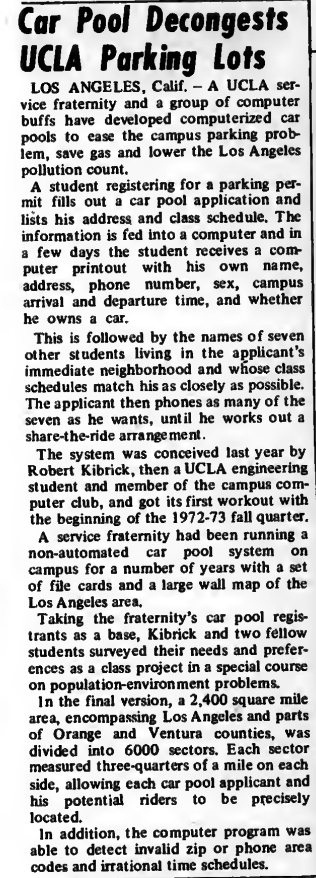Dec. 20, 1972: UCLA student automates carpool system
An early computer-based ridesharing system made UCLA students’ commutes more convenient.

Ridesharing apps like Uber and Lyft have revolutionized convenience in transportation, connecting users with drivers who can take them directly to their desired location. Back in 1972, an article in Computerworld magazine featured a story about a very early version of ridesharing at UCLA. Robert Kibirck, a UCLA engineering student, transformed an existing non-automated carpool system run by a service fraternity into an automated system.
Students registering for parking permits would provide their address and class schedule to the carpool system. All of the data would be processed by a computer program to create groupings of eight students with similar class schedules and nearby addresses. After a few days, students would receive an assignment containing a campus arrival and departure time along with the names of the seven students with similar class schedules living nearby. From there, the students would contact each other by phone to reach a carpooling agreement.
The students running the UCLA carpooling system hoped to reduce traffic congestion in campus parking lots, help students save gas, and lower air pollution in Los Angeles. Similar goals are echoed by today’s ridesharing companies, although many analyses say that the way ridesharing is typically used today has contributed negatively to air pollution.
–By Kathleen Esfahany